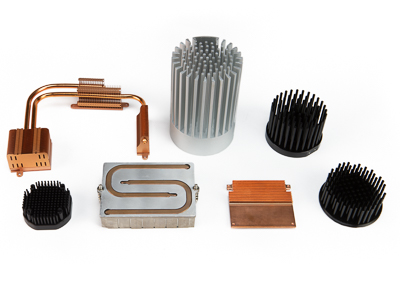Heatsinks

Depending on the device's design, a fan can be applied to create heatsink airflow that benefits the cooling process. If a heat sink is constructed to be passive, then a fan pushing air through it will do little to the overall cooling effect. But regardless of the internal design, heatsink fans are necessary to cool the external air so that heatsinks can function properly.
A variety of measures are taken to decrease a heat sink's thermal resistance, and thereby increase its effectiveness in conducting heat. While the choice of which metal and plating to use is important, other resistance-lowering factors include the smoothness of the heat sink base because the flatter it is, the less resistant it will be. In addition, a special grease or padding can be applied in between the base and the heat source in order to further reduce thermal resistance.
See how Cooliance's custom heatsink design services can help you.
For Your Next Project, Contact CoolianceToday!
High reliability thermal solutions & precision metal products.
